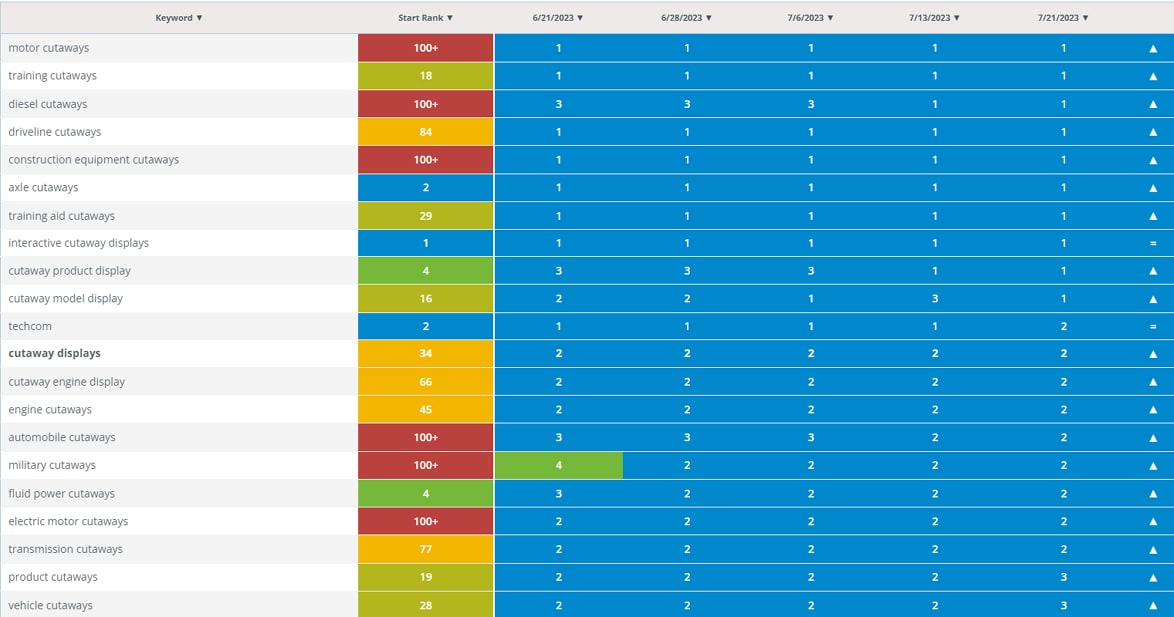
THE ULTIMATE GUIDE TO SEO-FRIENDLY WEB DESIGN: BOOST YOUR RANKINGS AND INCREASE ORGANIC TRAFFIC
Are you tired of seeing your website buried deep in search engine results? Do you want to take your online presence to the next level and attract more organic traffic? Look no further! In this ultimate guide to SEO-friendly web design, we will explore the powerful techniques and strategies to boost your website’s rankings and increase organic traffic.
From optimizing your website’s structure and navigation to creating compelling and keyword-rich content, we will dive into the key factors that search engines consider when ranking sites. But it doesn’t stop there – we will also delve into the world of mobile optimization, user experience, and the importance of site speed. So, whether you’re a seasoned web designer or a business owner looking to improve your online visibility, this guide is packed with valuable insights and actionable tips to help you achieve your SEO goals. Also, read Google SEO Articles.
Get ready to unleash the full potential of your website and watch your rankings soar!
IMPORTANCE OF SEO-FRIENDLY WEB DESIGN FOR SEARCH ENGINE RANKINGS
A visually appealing website is no longer enough in today’s digital landscape. Moreover, your website needs to be optimized for search engines to ensure it gets the visibility it deserves. In other words, SEO-friendly web design is creating sites that are aesthetically pleasing and designed to rank well in search engine results.
When your website is SEO-friendly, search engines can easily crawl and index your pages, leading to higher visibility and increased organic traffic. Therefore, implementing SEO best practices into your web design can improve your website’s rankings, drive targeted traffic, and ultimately grow your business.
CRITICAL ELEMENTS OF SEO-FRIENDLY WEB DESIGN
There are several vital elements that you need to consider when creating an SEO-friendly website. These elements work together to ensure your website is optimized for search engines and provides a great user experience. Let’s take a closer look at each of these elements:
RESPONSIVE DESIGN AND MOBILE OPTIMIZATION
With most internet users accessing websites on their mobile devices, having a responsive design is crucial. A responsive website automatically adjusts its layout and content based on the user’s screen size, making it easy to navigate and read on any device. In addition to mobile responsive design, mobile optimization involves optimizing your website’s loading speed, improving usability, and ensuring your content is easily accessible on mobile devices. Furthermore, a seamless mobile experience can enhance your website’s rankings and increase organic traffic.
OPTIMIZED WEBSITE STRUCTURE AND NAVIGATION
A well-structured website with straightforward and intuitive navigation improves user experience and helps search engines understand the content and hierarchy of your website. Therefore, when designing your website’s structure, organizing your content into logical categories and using descriptive and keyword-rich URLs is essential. Furthermore, optimizing your website’s structure and navigation can make it easier for users and search engines to find and navigate your website, leading to improved Google rankings and better user engagement.
KEYWORD RESEARCH AND ON-PAGE OPTIMIZATION FOR WEB DESIGN
Keyword research is crucial in SEO-friendly web design. Moreover, you can improve your website’s visibility in search engine results by strategically identifying relevant keywords and incorporating them into your website’s content, meta tags, headings, and URLs. Furthermore, when optimizing your website’s content, it’s essential to create high-quality, informative, and engaging content that provides value to your target audience. Above all, combining keyword optimization with compelling content can attract more organic traffic and increase your website’s rankings.
USER EXPERIENCE AND CONVERSION OPTIMIZATION
User experience (UX) plays a significant role in SEO-friendly web design. In other words, when users have a positive experience on your website, they will likely stay longer, engage with your content, and convert into customers. For example, to optimize user experience, focusing on website speed, easy navigation, clear calls-to-action, and visually appealing design is essential. Above all, a seamless and enjoyable user experience can increase engagement, reduce bounce rates, and improve your website’s rankings.
TECHNICAL SEO CONSIDERATIONS FOR WEB DESIGN
Technical SEO involves optimizing your website’s technical aspects to improve its visibility and performance in search engine results. Some critical technical SEO considerations for web design include:
– Optimizing your website’s meta tags, headers, and URLs.
– Implementing structured data markup to enhance search engine understanding.
– Optimizing your website’s XML sitemap and robots.txt file.
– Implementing HTTPS for a secure website.
– Optimizing your website’s internal linking structure.
– Make sure you have no broken links.
Therefore, by addressing these technical SEO considerations, you can ensure your website is well-optimized for search engines and improve its rankings.
WEBSITE SPEED AND PERFORMANCE OPTIMIZATION
Website speed is critical to user experience and search engine rankings. Moreover, users expect websites to load quickly, and search engines prioritize fast-loading websites in their search results. For instance, to optimize your website’s speed and performance, you can:
– Minimize file sizes by compressing images and optimizing code.
– Enable browser caching to reduce load times for returning visitors.
– Use a content delivery network (CDN) to deliver your website’s content faster.
– Minimize using plugins and scripts that can slow down your website.
By optimizing your website’s speed and performance, you can provide a better user experience, reduce bounce rates, and improve your website’s rankings.
SEO-FRIENDLY WEB DESIGN BEST PRACTICES
Let’s explore some best practices that can further enhance your website’s rankings and visibility:
Conduct thorough keyword research
Before designing your website, you must conduct thorough keyword research to identify the keywords relevant to your business and target audience. Furthermore, by incorporating these keywords strategically into your website’s content, meta tags, headings, and URLs, you can improve your website’s visibility in search engine results. Also, see Website Redesigning.
Optimize your website’s meta tags and headings.
Meta tags and headings are crucial in SEO. Therefore, by optimizing your website’s meta tags (including the title tag and meta description) and headers (such as H1, H2, and H3 tags), you can provide search engines with valuable information about your website’s content and improve its rankings.
Create high-quality, keyword-rich content.
Content is king when it comes to SEO. Moreover, creating high-quality, informative, and engaging content optimized for your target keywords can increase organic traffic and improve your website’s rankings. Above all, remember to focus on providing value to your audience and avoid keyword stuffing.
Optimize your website’s images.
Images can enhance the visual appeal of your website, but they can also slow down its loading speed if not optimized properly. Therefore, you can improve your website’s performance and rankings by compressing images, using the appropriate file format, and adding alt tags.
Implement structured data markup.
Structured data markup is a code added to your website’s HTML that helps search engines understand the content and context of your web pages. By implementing structured data markup, you can enhance your website’s visibility in search engine results and attract more organic traffic.
Use responsive design and optimize for mobile devices.
With the increasing use of mobile devices, having a responsive website is crucial. For example, a responsive website automatically adjusts its layout and content based on the user’s screen size, providing a seamless user experience on any device. Above all, optimizing your website for mobile devices can improve your website’s rankings in mobile search results.
Monitor and analyze your website’s performance.
Monitoring and analyzing your website’s performance is essential to identify improvement areas and track your SEO efforts’ effectiveness. For example, use tools like Google Analytics to gather data on your website’s traffic, user behavior, and conversions. Moreover, this data can help you make informed decisions and optimize your website for better rankings.
CASE STUDY OF SUCCESSFUL SEO-FRIENDLY WEB DESIGN
To further illustrate the power of SEO-friendly web design, let’s take a look at a case study of a successful website using best SEO practices:
Techcom.com
We implemented SEO-friendly web design techniques to improve its organic visibility and increase sales. They saw a significant increase in organic traffic and sales by conducting thorough keyword research, optimizing product pages with relevant keywords, and improving website speed.
As a result, they rank nationally for many high-value keywords.
For example, here are a few of Techcom’s top keyword results.
Motor cutaways
Training cutaways
Diesel cutaways
Driveline cutaways
Construction equipment cutaways
Axle cutaways
Training aid cutaways
Interactive cutaway displays
Cutaway product displays
Cutaway model displays
TOOLS AND RESOURCES FOR SEO-FRIENDLY WEB DESIGN
To help you implement SEO-friendly web design techniques and improve your website in today’s market, here are some valuable tools and resources:
– Uubersuggest: Reverse engineer your competitors’ SEO, content marketing, and social media strategy.
– Google Search Console: A free tool provided by Google to monitor and maintain your website’s presence in Google Search results.
– Moz: A comprehensive SEO toolset that offers keyword research, link building, site audits, and more.
– SEMrush: A powerful SEO tool that provides keyword research, competitor analysis, site audits, and rank tracking.
– Google PageSpeed Insights: A tool that analyzes the performance of your website and provides suggestions for improvement.
– W3C Markup Validation Service: A tool that checks the validity of your website’s HTML and CSS code.
CONCLUSION
Creating an SEO-friendly website is crucial for improving your search engine rankings and attracting organic traffic. By optimizing your website’s structure, navigation, content, and user experience, you can enhance its visibility and drive targeted traffic. Conduct thorough keyword research, create high-quality content, optimize your website’s images, and monitor your website’s performance. By implementing the strategies and best practices outlined in this guide, you can unleash the full potential of your website and watch your rankings soar. So, get started today and take your online presence to the next level with SEO-friendly web design!
Also, see AI Search on Google.
ABOUT VISIONEFX
VISIONEFX provides services to small business owners throughout the United States. Please read what our customers have to say about VISIONEFX on Google Reviews. For more information, call (757) 619-6456 or use our contact form.




